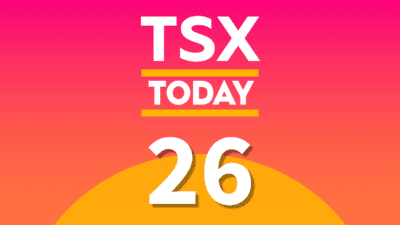Canada’s top 5 banks have performed strongly since the Global Financial Crisis, with a strong housing market and better than expected economic growth driving heightened demand for credit. This has seen all of the top 5 regularly increase their dividends and offer investors solid dividend yields in excess of 3%, with low payout ratios on the back of ever growing profits.
But there is growing concern that the Canadian housing market is overheated, and coupled with declining opportunities for Canadian banks to grow domestic market share, there is a danger these growing profits will come to an end.
Is Canada’s housing market overheated?
There have been increasing claims from a number of analysts and market pundits that the Canadian housing market is overheated, with house prices continuing to spiral as buyers continue on an unabated buying spree.
Recent data from the Canadian Real Estate Association shows the national average house price in March 2014 had risen by 6% compared to the same period in the previous year. Sales activity was also up for the same period by almost 5%, indicating the buying frenzy is continuing.
Another indicator of just how overheated the housing market has become is the Economist’s price-to-rents ratio. According to this ratio, which measures the price differential between housing prices and rents, the Canadian housing market is overvalued by a whopping 76%.
This has led many analysts to claim the market is overheated and while a crash may not be imminent, the market needs to stabilize and there is the growing likelihood of prices in a number of cities falling.
Any slowdown of the Canadian housing market will have a significant impact on the performance of Canada’s top 5 banks. Not only is there limited domestic growth opportunities, but the majority of personal debt held by Canadian households is residential mortgages. This vulnerability is underscored by virtue of the top 5 banks’ reliance upon residential lending and personal credit as key profit drivers and highlights the vulnerability of Canadian households and the top 5 banks to any disruption in the Canadian economy and housing market.
What does this mean for investors?
A housing slowdown will be a double whammy for the top 5, because they are already struggling to find growth opportunities in a banking and financial services market constrained by size and saturation. It would particularly impact Canada’s largest financial institution, the Royal Bank of Canada (TSX: RY)(NYSE: RY), and its largest lender by assets, Toronto Dominion Bank (TSX: TD)(NYSE: TD).
But all of the top 5 have focused on a varying range of strategies to identify further growth opportunities. Wealth management has been identified as a key space for growth by Canada’s banks, but it’s those that have invested in building businesses outside Canada that have the greatest potential, but also a greater degree of risk.
The Bank of Nova Scotia (TSX: BNS)(NYSE: BNS) has built an impressive presence in the fast growing economies of Peru and Colombia. This has seen it become the third largest bank in Peru and the fifth largest in Colombia. But there are signs of growing volatility in Latin American emerging markets that could derail the bank’s expected growth in the region.
These growing pains are impacting economic growth across the region as well as affecting the value of local currencies. Any significant fall in the value of the Colombian peso or the Peruvian sol against the U.S. dollar will impact earnings and the bank’s international business unit’s bottom line.
Both the Bank of Montreal (TSX: BMO)(NYSE: BMO) and Toronto Dominion have targeted growth opportunities in the U.S. banking market. The U.S. market is 19 times the size of Canada’s and at this time, it’s the world’s largest, with assets in excess of $15 trillion.
The Bank of Montreal bought troubled Milwaukee-based lender Marshall & Ilsley for U.S. $4.1 billion in 2011, roughly doubling the size of its U.S. subsidiary, Chicago-based Harris Bank. The bank’s U.S. operations are now a major contributor to its financial performance with over 2 million customers and contributing around a third of its total revenue.
Toronto Dominion has aggressively beefed up its retail banking presence in the U.S. northwest, as well as acquiring high net worth wealth manager Epoch Investment Partners for U.S. $668 million in 2013. This aggressive growth strategy has made Toronto Dominion the ninth largest commercial banking franchise in the U.S. with those operations contributing around 26% of its 2013 revenue and 13% of its net income for 2013.
All of the top 5 continue to pay impressive dividend yields with low payout ratios, suggesting their dividend yields will remain sustainable even if they are unable to continue aggressively growing market share. The Bank of Montreal and CIBC are paying dividends with yields in excess of 4% with payout ratios of around 45%, whereas Toronto Dominion has the lowest yield of the top 5 at 3.6% with a payout ratio of 45%. The Bank of Nova Scotia and the Royal Bank of Canada both have yields of 3.9% and payout ratios of 45%.
Foolish bottom line
Clearly the Canadian housing market appears overvalued on a range of measures. It is unlikely the market will crash, but it could enter a period of price consolidation and stabilization. This coupled with a relatively small and saturated banking market will impact the growth prospects of Canada’s top 5. The Bank of Nova Scotia, Toronto Dominion, and Bank of Montreal are in the best position to offset this impact and continue to grow profitability over the long term.







